Termites
Did you know?
Termites have been around since the time of the dinosaurs!
Explore Termites
Termite Facts
- All termites are social insects and raise their young as a group.
- The total weight of all of the termites in the world is more than the weight of all the humans in the world.
- Termite colonies eat non-stop, 24 hours a day, seven days a week!
- Termites have wings that they shed once they have found a good place to build a nest.
Termites are known as “silent destroyers” because of their ability to chew through wood, flooring and even wallpaper undetected. There are about 2,000 known termite species in the world. Each year, termites cause more than $5 billion in property damage.
Dampwood Termites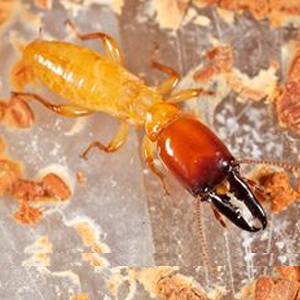
Dampwood termites are normally larger in size than other termite species. Like drywood termites, dampwood colonies don’t have workers. Younger termites called “false workers” do all the work for the colony.
- Size: 1/2″ to 5/8″
- Shape: Long, narrow, oval
- Color: Brownish
- Legs: 6
- Wings: Yes
- Antenna: Yes
- Common Name: Dampwood termite
- Kingdom: Animalia
- Phylum: Arthropoda
- Class: Insecta
- Order: Isoptera
- Family: Hodotermitidae
- Species: Varies
Diet:
Dampwood termites like to feed on very moist wood.
Habitat:
Because they need lots of moisture, dampwood termites usually live in damp, dying wood or in houses with leaking plumbing that keeps the wood wet.
Impact:
Dampwood termites do not carry disease and don’t usually bother buildings because there is not enough water in the wood.
Prevention:
- To avoid dampwood termites, make sure water drains away from your house.
- Replace any damp or damaged wood on the outside of your home.
Drywood Termites
Drywood termites form colonies of up to 2,500 members. Drywood termite colonies don’t have workers. Younger termites, called “false workers”, do all the work for the colony.
- Size: 3/8″
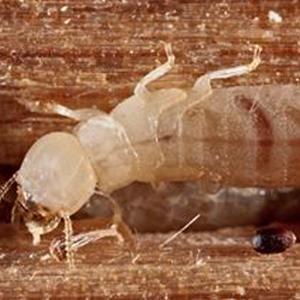
Drywood Termite
- Shape: Long, narrow, oval
- Color: Light brown
- Legs: 6
- Wings: Yes
- Antenna: Yes
- Common Name: Drywood termite
- Kingdom: Animalia
- Phylum: Arthropoda
- Class: Insecta
- Order: Isoptera
- Family: Kalotermitidae
- Species: Varies
Diet:
Drywood termites eat wood, wallpaper, plastics and fabric made from plants.
Habitat:
Drywood termite colonies are usually found in dry wood and they do not require moisture or contact with the soil.
Impact:
Drywood termites can build nests and dig tunnels in buildings. These tunnels cause major damage because the wooden support beams can become weak and make the building lean or fall down.
Prevention:
- Make sure firewood and scrap wood is stored away from your house.
- Seal all cracks and crevices around the outside of your home.
Formosan Termites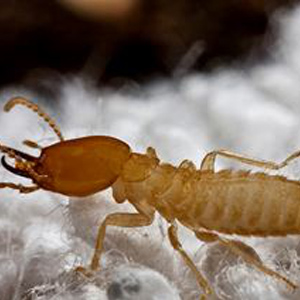
Formosan termite colonies can be up to 300 feet long and there can be tens of thousands of termites in a single colony. Formosan termite colonies are divided into three groups: workers, soldiers and reproductives. They are the largest and most destructive kind of termite.
- Size: 1/2″
- Shape: Long, narrow, oval
- Color: Yellowish brown
- Legs: 6
- Wings: Yes
- Antenna: Yes
- Common Name: Formosan termite
- Kingdom: Animalia

- Phylum: Arthropoda
- Class: Insecta
- Order: Isoptera
- Family: Rhinotermitidae
- Species: Varies
Diet:
Formosan termites eat wood and fabric made from plants. When they eat dead trees, these termites help the environment and make space for new plant life.
Habitat:
Formosans live in huge underground colonies, and build mud nests inside the walls of a building. They can also live in boats and buildings.
Impact:
Formosan termites eat a lot of wood and can damage your house.
Prevention:
- To avoid Formosan termites, make sure water drains away from your house.
- Replace any damp or damaged wood on the outside of your home.
- Inspect your home for signs of termites, such as bubbling paints, mud tubes and wood that sounds hollow when tapped.
Subterranean Termites 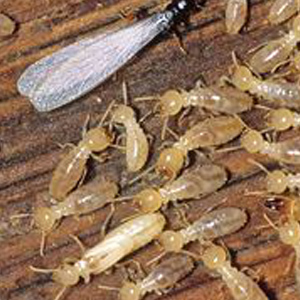
Subterranean termite colonies can have up to 2 million members! Their colonies are divided into three groups: workers, soldiers and reproductives.
- Size: 1/8″ to 1″
- Shape: Long, narrow, oval
- Color: Creamy brown
- Legs: 6
- Wings: Yes
- Antenna: Yes
- Common Name: Subterranean termite
- Kingdom: Animalia
- Phylum: Arthropoda
- Class: Insecta
- Order: Isoptera
- Family: Rhinotermitidae
- Species: Varies
Diet:
Termites eat wood, wallpaper, plastics and fabric made from plants.
Habitat:
Subterranean termites need contact with the soil to survive. They live in underground colonies or in wet areas aboveground. They build tunnels to reach food and every spring, groups of reproductive termites fly off to start new colonies.
Impact:
Subterranean termites are the most destructive kind of termite. They can eat a lot of wood and they can cause a lot of expensive damage to a house! They can destroy building foundations, wooden support beams, plastic plumbing pipes, sub-flooring, insulation … even swimming pool liners and filtration systems! Termites can also injure or destroy living trees and shrubs.
Prevention:
- Make sure water drains away from your house.
- Don’t let water build up around your home’s foundation. Termites like that!
- Replace any damp or damaged wood on the outside of your home.
- Never leave wood scraps in the yard for them to snack on.



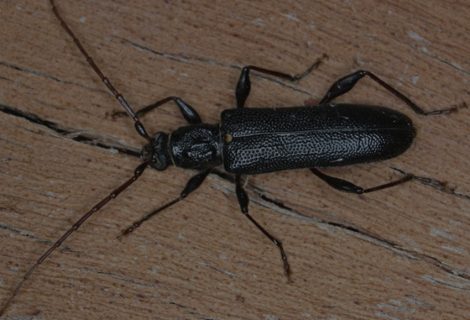
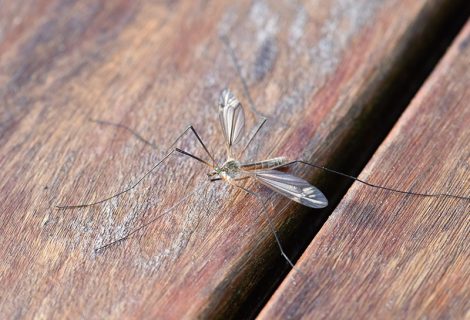
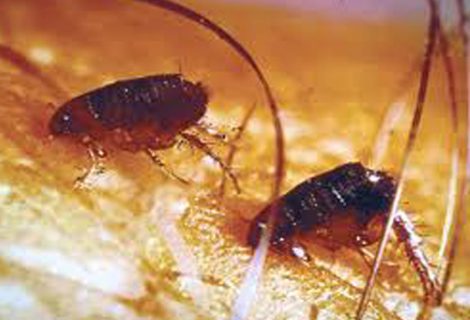
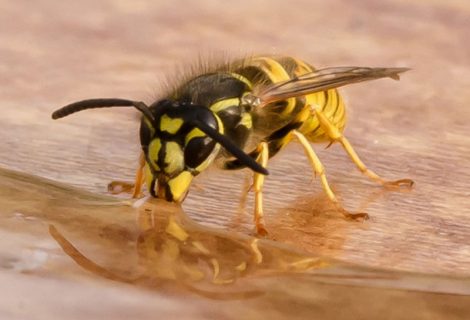
Recent Comments